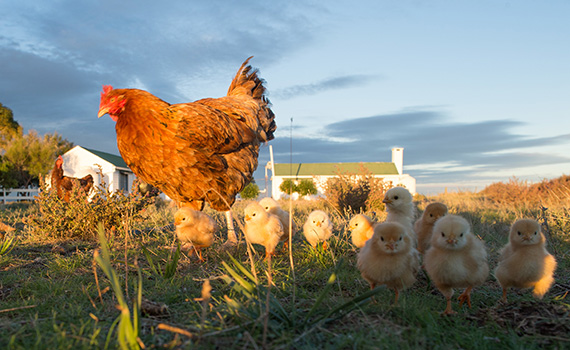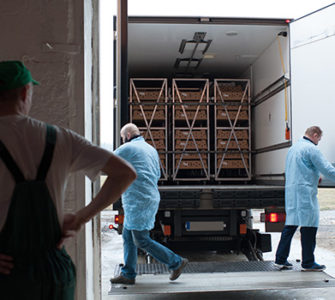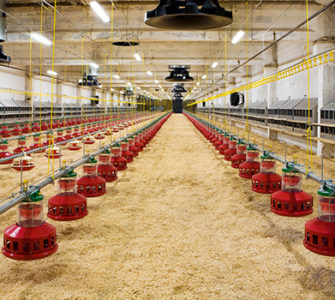Commercial and backyard poultry production: Bringing two worlds together for better biosecurity
by Tom Tabler, PhD
Extension Professor
Mississippi State University Extension Service, Poultry Science Department
Mississippi State, MS
The poultry world is made up of two very distinct sides. One is the multibillion-dollar commercial poultry industry that supplies high-quality, reasonably priced protein to the US and much of the rest of the world. The other side is the increasingly popular backyard segment found in both rural and urban areas, where small numbers of chickens are kept for meat, eggs, entertainment, exhibition and youth projects.
Years ago, as a young broiler service technician in Arkansas, I routinely visited a commercial, two-house broiler farm located down a narrow, crooked dirt road. En route, I would always drive by — or through — a flock of chickens and guineas that spent as much time in the road as they did in their owner’s front yard, which was two driveways down from the commercial farm.
Not much has changed. Driving the roads in Mississippi, I still see backyard chickens foraging just down the road from the biosecurity sign at the entrance to a commercial poultry farm. Backyard chickens are often free to go where they will. I saw the disease threat they pose years ago, and the threat today may be greater since the backyard chicken movement appears to be burgeoning.1
Daral Jackwood, PhD, Ohio State University’s expert on infectious bursal disease (IBD), explained in a Poultry Health Today article that movement of backyard poultry appeared to be responsible for an outbreak of very virulent IBD in Washington State that led to unusually high mortality in commercial layers. “The role of backyard poultry as a reservoir for the viruses is a major concern…” he said.
There are many other major disease threats to commercial poultry such as avian influenza and, in some areas such as my own, infectious laryngotracheitis.
Unsound biosecurity
Because I now work for an extension service, I get to see both segments of the poultry world up close. I’ve found the commercial poultry industry does a good job of implementing and following sound biosecurity practices, but the backyard segment still doesn’t police itself much at all.
Most backyard poultry growers don’t know that different species, especially waterfowl and chickens, should not be mixed. I see this all the time. Many don’t understand the perils of allowing visitors around their flocks or why they shouldn’t visit other backyard flocks. They don’t know why their birds should be confined and not allowed access to wild bird droppings (assuming they don’t have “free range” chickens).
Another common problem I’ve seen among backyard growers is the habit of tossing out leftover food scraps that attract wild animals, which could in turn track disease to commercial poultry farms. Many backyard growers don’t know about National Poultry Improvement Plan-certified clean flocks and why it’s a good idea to quarantine birds for 30 days after purchase or after bringing them back from shows or fairs.
It’s no wonder because most backyard chicken growers have never talked to a true poultry veterinarian. They may have access to a local companion- or large-animal veterinarian, but oftentimes that veterinarian knows little about chickens because it’s not his or her specialty.
Worsening the situation is the paucity of experienced poultry extension specialists in the country. I can count them on both hands with fingers to spare. Most extension experts are specialists in something other than chickens and can’t tell a grower to look for coughing or sneezing or swollen sinuses or nasal discharge because they, personally, have never seen such a thing on a chicken. Most don’t even know that a chicken can cough or sneeze. Most won’t know to ask someone with sick chickens if they have been around other chickens recently, if they have taken birds to a show or if they have recently purchased new birds.
Incommunicado
This discussion raises the question of whether it’s the commercial industry’s job to educate backyard operators. Years ago, I used to think the answer was “maybe not.” A better answer now might be “maybe so” since biosecurity is the commercial industry’s best defense against a disease outbreak and because of the seriousness of the disease threats today.
As it stands now, the commercial side of the poultry industry and backyard growers never really interact with one another. When I speak at commercial-grower meetings, there’s certainly never a backyard grower in the room. When I speak at backyard-grower meetings put on by local county extension personnel, there’s never a commercial grower or poultry-company representative in the room.
I’ll be the first to admit that commercial poultry veterinarians don’t need more work to do — their plates are full already — but they instinctively know all the things backyard growers need to know to prevent disease and keep flocks healthy. I’ve found many backyard growers are eager to learn and would really welcome the opportunity to speak to a bona fide poultry vet.
If company poultry veterinarians provided sound advice and their expertise at gatherings for backyard growers, it would establish rapport with the other side of the poultry world. Ultimately, the commercial industry would benefit if the level of biosecurity is improved among backyard growers.
To sum up, the importance of biosecurity should be a given for anyone raising chickens. It needs to be viewed less as a chore and more as a state of mind. It’s taking all steps necessary to prevent an infectious disease from being carried onto your farm and reducing the likelihood that disease will leave your property, especially if you have an outbreak. Biosecurity needs to be the responsibility of everyone in the poultry industry, large and small.
If we’re committed to doing all we can to protect our commercial birds, we can’t leave the entire backyard segment to chance and still consider our flocks safe.
Editor’s note: The opinions and advice presented in this article belong to the author and, as such, are presented here as points of view, not specific recommendations by Poultry Health Today.
1. The backyard chicken movement. Acreagelife.com. http://www.acreagelife.com/articles/backyard-chicken-movement Accessed August 30, 2017.
Posted on January 14, 2018

















